As winter approaches and temperatures drop, you might find yourself reaching for an extra sweater or turning up the thermostat. Your feline companion doesn’t have those options, which naturally leads to wondering whether your cat could benefit from a little extra protection against the cold. While cats come equipped with natural insulation through their fur, the answer isn’t quite as simple as assuming they’re always warm enough.
The truth is, your cat’s winter comfort depends on several factors beyond just having a fur coat. From breed characteristics to health conditions, age, and living situation, each cat has unique needs when facing colder weather. Let’s explore the fascinating world of feline winter care and discover when that adorable cat sweater might actually serve a practical purpose.
Understanding Natural Cat Insulation

Your cat possesses a remarkable natural heating system that would make any thermal engineer envious. Cats develop winter coats consisting of an undercoat of millions of fine hairs, usually a light-grayish color. This undercoat provides extra insulation from heat and cold.
Think of this system like wearing a high-tech layered outfit. The undercoat is a fine, soft, insulating layer underneath the longer and thicker guard hairs, acting like a wooly sweater underneath a raincoat. Cats use thermoregulation to regulate body temperature, with their hairs closing together to protect against cold and spreading out when ventilation is necessary.
Interestingly, a cat’s winter coat doesn’t grow because the weather gets colder but grows due to how much sunlight your cat is exposed to. This means your cat gets a winter coat even if you live in an area that doesn’t get snow, as the days get shorter and there’s less sunshine.
When Cats Actually Get Cold
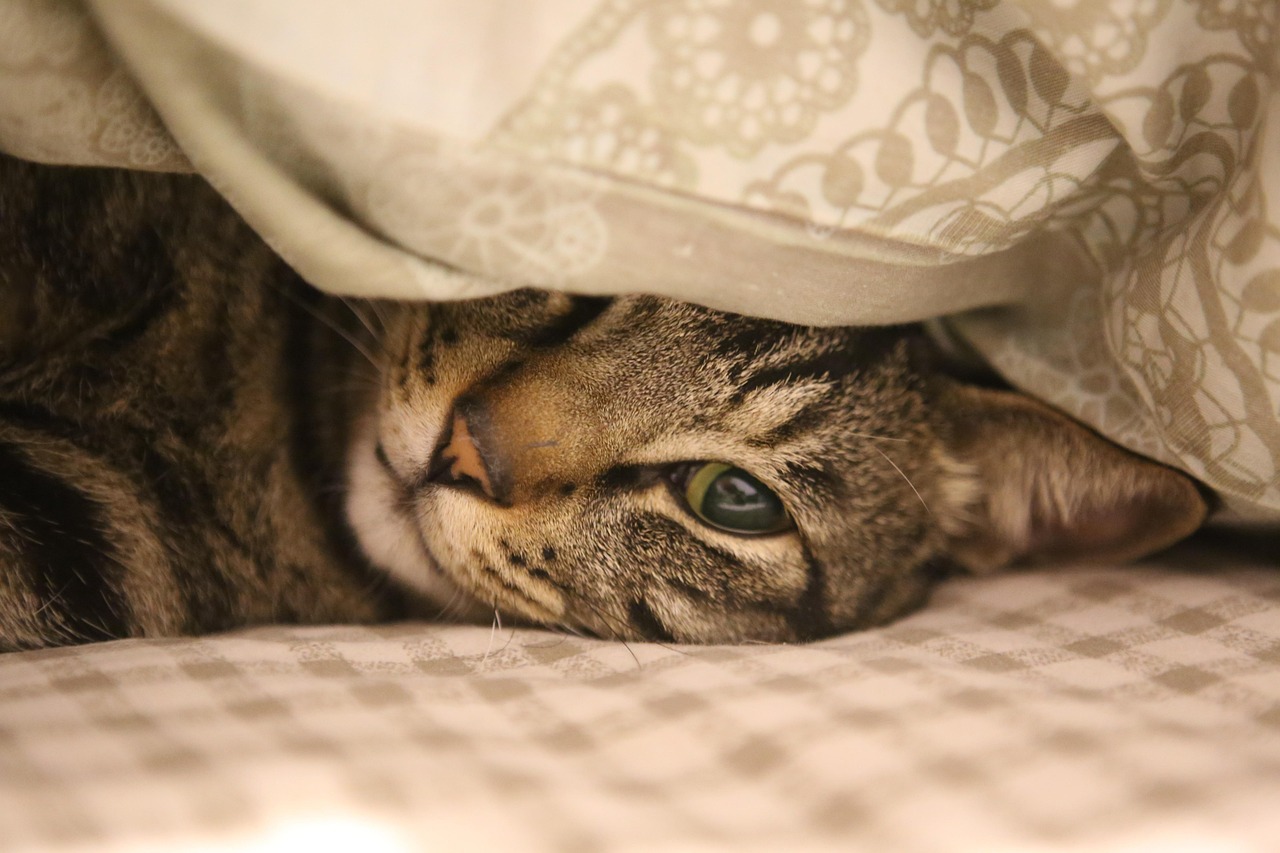
Despite their impressive natural insulation, cats do experience cold just like you do. Cats get cold very easily, and they’re descended from desert dwellers with a warmer body temperature than humans, which makes them typically feel colder quicker than humans do.
The general rule of thumb is that if you are feeling cold, then the chances are your cat is too. It is advised that you make an extra effort to keep your cat inside when the outside temperature falls below 45 degrees Fahrenheit. Cats are at medium risk when the temperature drops from 6°C to 0°C.
Your cat’s ability to handle cold varies significantly based on individual factors. The size and weight of a cat directly impacts their ability to regulate their temperature, with smaller cats being more sensitive to the cold as they have less body fat to help them keep warm.
Recognizing Signs Your Cat is Cold

Your cat can’t simply tell you when they’re chilly, so learning to recognize the signs becomes crucial for their comfort and health. If your cat is cold, their extremities may start to feel cold to the touch, so check your cat’s ears, paws and tail.
Signs that your cat may be too cold include shivering, puffing his fur, a cold tail, nose, and seeking warmer spots to cuddle. Cats who do what’s known as hunching (where they move closer to the ground) and puffing (where they puff up their fur) are likely feeling the cold.
Watch for behavioral changes too. If your cat is leaving their usual snoozing area to lie by the radiator, or waking up to move closer to a heat source, then this is another telling sign that your cat is feeling the cold. A cat that is feeling the cold will also tuck their paws and tail underneath them to keep extra warm.
Which Cats Need Extra Winter Protection
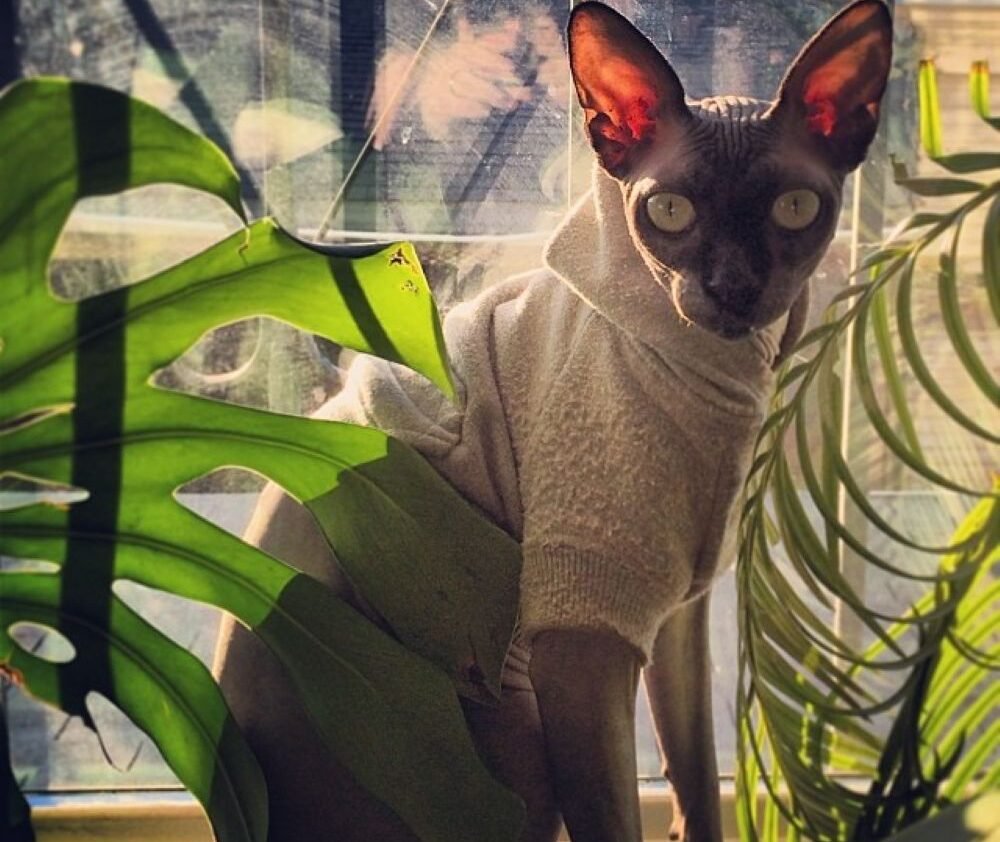
Not all cats are created equal when it comes to cold tolerance. Hairless cat breeds such as Sphynxes and Peterbalds should avoid being out in the cold or should always have on a coat or jacket to keep them from getting too cold even in mild but cool weather. If you have a hairless breed of cat or a frail, elderly cat who must go outside, a sweater may provide an extra layer of warmth.
Small cats, thin-coated cats, and older and young cats can’t tolerate temperatures below 50 degrees Fahrenheit. Underlying medical conditions that your cat may have, such as hyperthyroidism in cats can lead to weight loss and various changes in their coats, which often leads to greater sensitivity to the cold.
There are actually some cat breeds that are better suited for cold weather, such as Norwegian Forest Cats, Maine Coons, Siberians, Ragdolls, Russian Blues, and Himalayans. Even these hardy breeds still need monitoring during extreme weather conditions.
Types of Cat Winter Wear
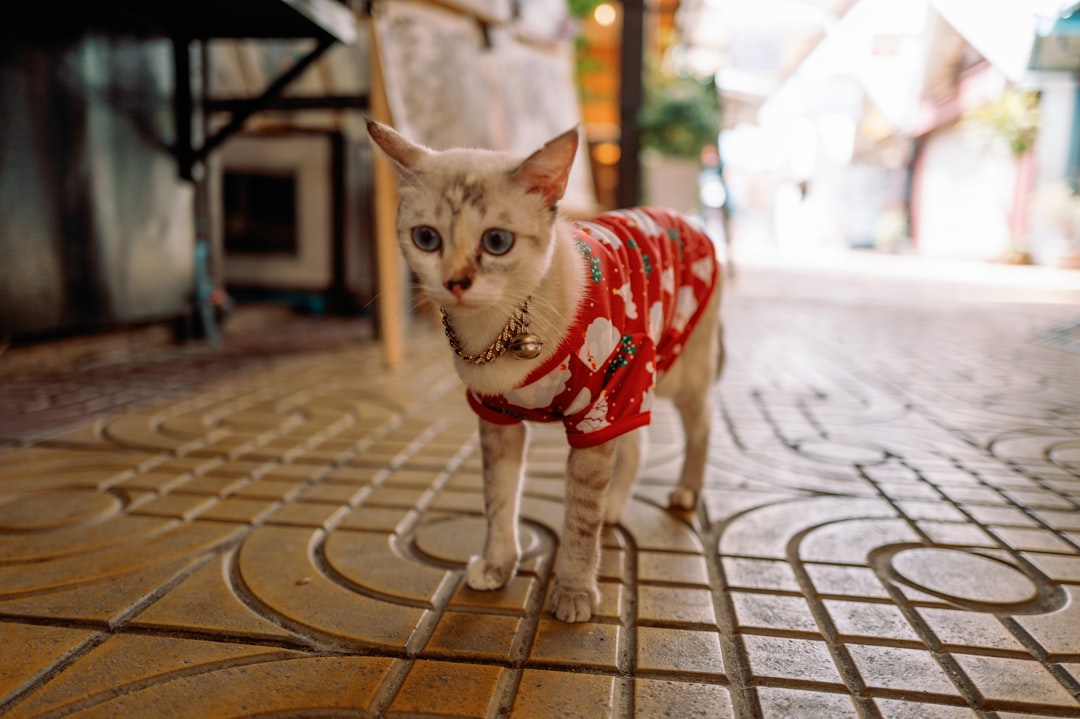
If you’ve determined your cat needs extra warmth, several options are available. Dressing your cat in a thermal coat or sweater adds an extra layer of protection that works alongside its fur coat. Cat winter coats should be made from insulating materials like fleece, wool, or microfiber to retain body heat and keep cats warm during colder temperatures.
For adventurous cats who spend time outdoors, specialized gear offers better protection. The Drift Kitty Coat was designed for cold-weather cat explorers, offering a waterproof fabric outer layer and cozy fleece inner lining for warmth. If you will be exploring in the snow or ice, you should look for a waterproof or water-resistant jacket or coat.
Consider fit and functionality when choosing cat clothing. It’s essential to choose coats for cats with adjustable straps or closures to ensure a snug and comfortable fit, allowing for customization according to the cat’s body shape and size. Be sure it has a small hole above the shoulder blades for the leash to be able to go through and attach to your cat’s harness.
Getting Your Cat Used to Wearing Coats
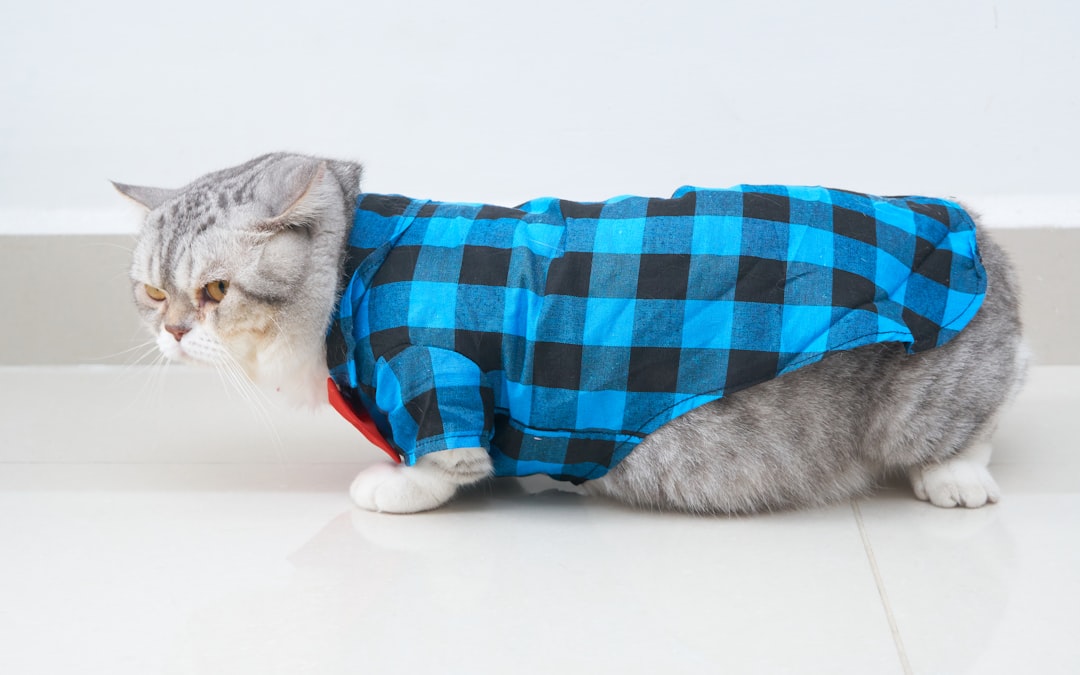
Introducing your cat to winter wear requires patience and positive associations. Although some cats may not be entirely happy with a sweater on, you can try positive reinforcement to encourage them, but some cats will never like to be dressed up, and for others, it may take more time to adjust to a new layer on their body.
To get your cat used to wearing their jacket, you can let them wear it indoors for short increments of time (just as you did when you were harness training). When trialing a sweater or jacket on your cat, watch their body language to understand whether they are comfortable. If your cat shrinking away, aggressively flicking their tail, exhibiting major air-plane ears, it is likely that they are not happy.
Not all cats are comfortable wearing sweaters or clothes. If they look particularly uncomfortable in it you should not force it. Always supervise your cat while they are wearing outerwear in case it gets caught or snagged on something.
Creating Warm Indoor Environments
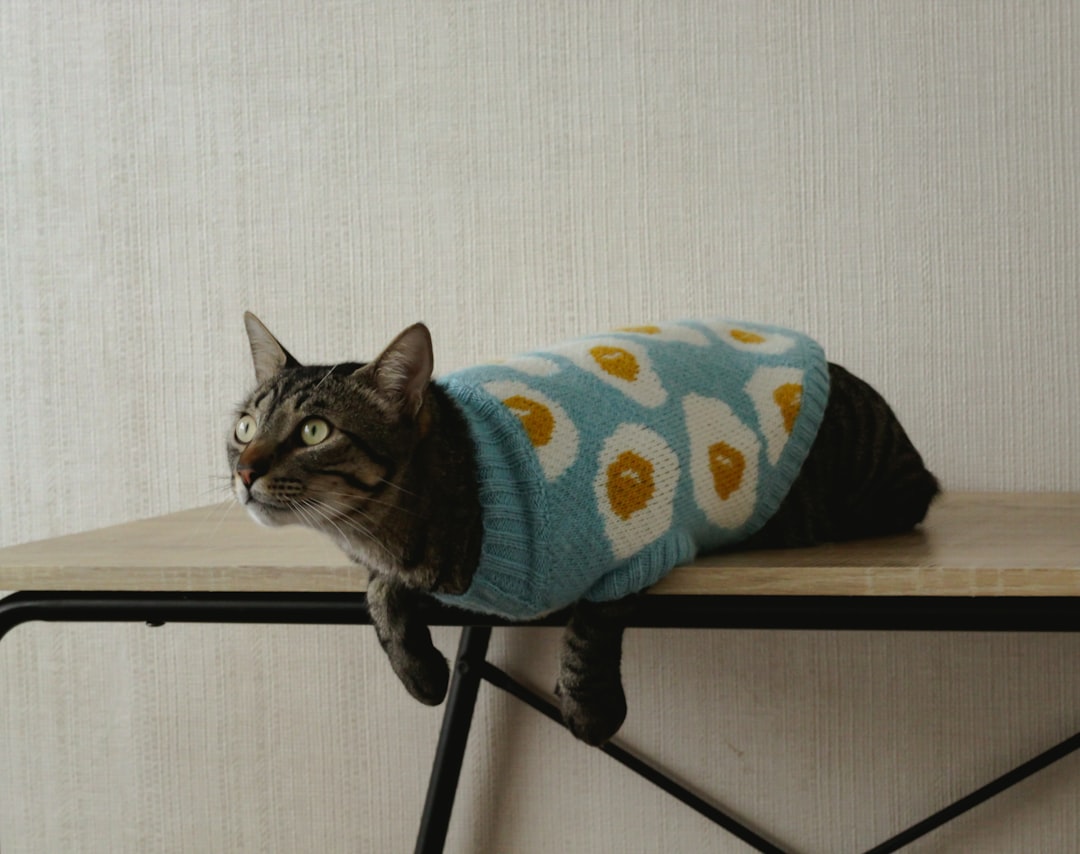
Sometimes the solution isn’t adding clothing but improving your home environment for winter comfort. A good rule of thumb is to keep the house around 70 degrees so that your cat’s body temperature can stay where it needs to be, though cats will be okay in indoor temperatures as low as 50. If your house is that cold, consider providing warmth in your cat’s bedding and pay close attention if you notice your cat sleeping in a tighter circle or snuggling more, as this could be a sign that they are starting to get too cold.
Your cat can stay toasty warm if you give her lots of warm places to snuggle indoors, including heated beds placed in your cat’s favorite spots, though heating pads meant for people should not be provided to cats because they have the potential to overheat your kitty.
Consider creative solutions for outdoor cats who need shelter. If you want to help the outdoor cats in your neighborhood stay safe and protected from the cold, try setting up an outdoor cat house or insulated shelter with enough room for each cat to curl up and maintain their body heat.
Your cat’s winter comfort depends on multiple factors rather than a one-size-fits-all solution. While many cats manage well with their natural fur coats, certain breeds, health conditions, and circumstances make additional protection beneficial or even necessary. Pay attention to your feline friend’s behavior and physical signs to determine their individual needs. Whether that means a cozy sweater, better indoor heating, or simply ensuring easy access to warm spots, your cat will appreciate the thoughtful consideration. What signs have you noticed that tell you your cat might be feeling chilly?






